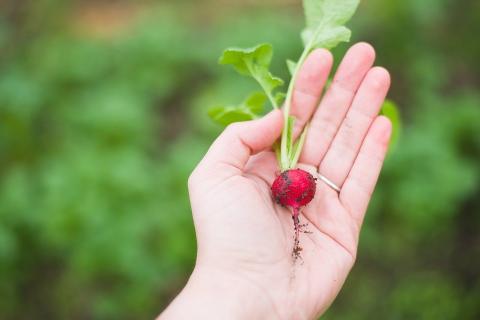April Showers Bring May Gardens

With spring finally upon us, it is time to start thinking about planting this season’s vegetable gardens! It is important to begin planning now so that you can get your fruits and vegetables planted in time for the summer and fall harvests!
The first step is to decide where you are going to plant your vegetable garden. That will determine what you will be able to grow. How much sun will the spot get? Is there space available for vines such as tomatoes, peas, and cucumbers to climb vertically? How wide can your rows be? Will you be able to keep pests and critters out?
Once you have determined where you will be planting your vegetable garden, it is time to decide what you will want to plant! A wide variety of vegetables can be grown in New Hampshire. Check out this resource for a list of vegetables you can grow!
You can either plant from seeds or transplant seedlings that have already started to grow. If you are going to plant seeds make sure you plant a good amount of seeds, to allow for some that will not grow.1 They should be deep enough to not be washed away by the rain, but not too deep that they will fail to reach the surface.1 A seed should be planted to a depth that is 3-4 times its thickness.1 If you are using transplants, be sure to avoid disturbing the roots when planting them in your garden.
Many vegetables need to be planted within the month of April so that they will be ready for harvesting in the summer. These vegetables include asparagus, beets, cabbage, carrots, kohlrabi, lettuce, onions, parsley, radishes, rhubarb, spinach and Swiss chard.1 They should all be planted at the end of April.
